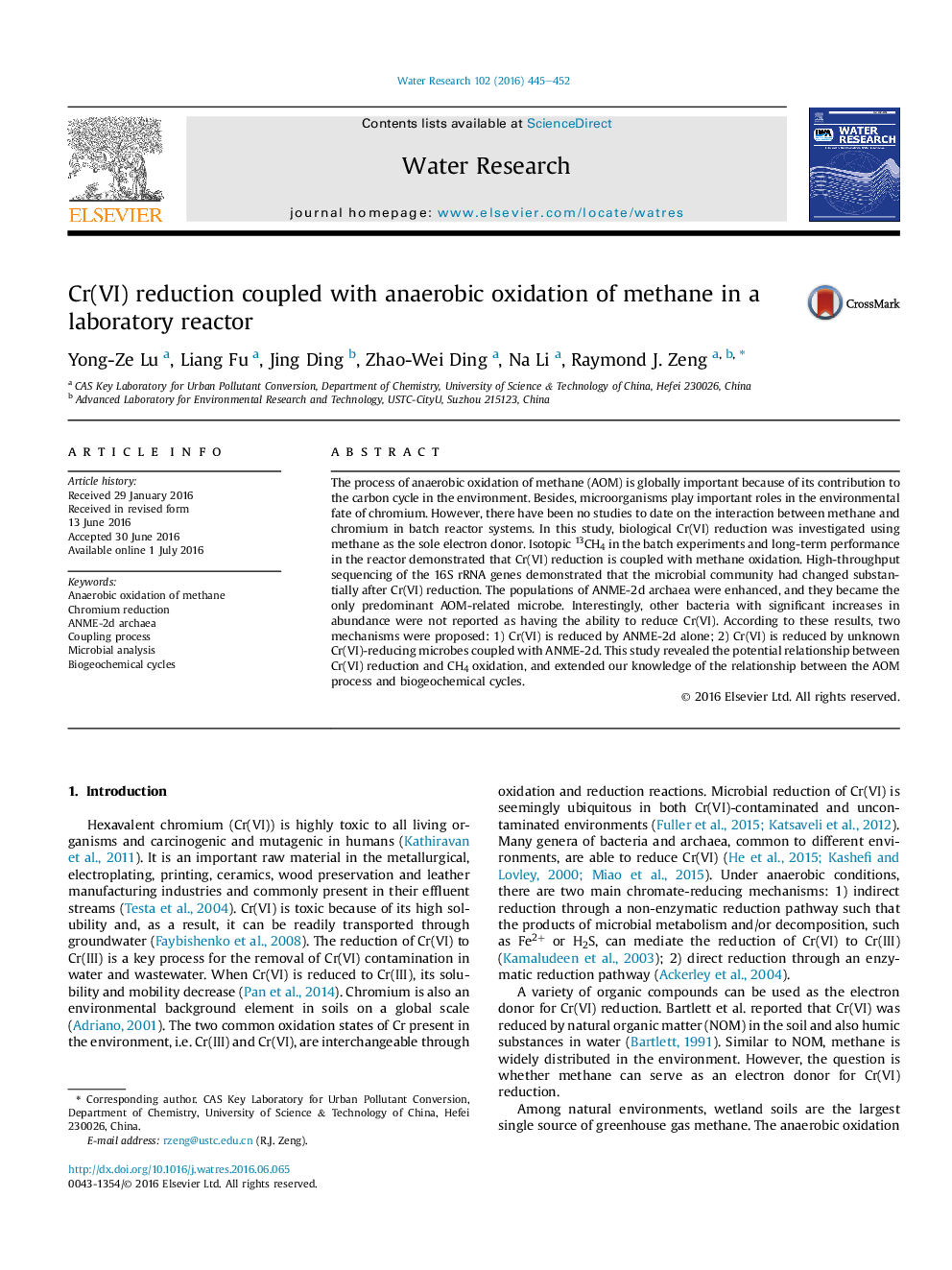| Article ID | Journal | Published Year | Pages | File Type |
|---|---|---|---|---|
| 4480875 | Water Research | 2016 | 8 Pages |
•Cr(VI) reduction is coupled with methane oxidation.•ANME-2d was the only AOM-related taxon capable of Cr(VI) reduction.•Bacteria with significant increases are not reported to have Cr(VI)-reducing ability.•Two mechanisms for this coupling process are proposed.•Cr(VI) is reduced by ANME-2d or unknown Cr(VI)-reducing microbes coupled with ANME-2d.
The process of anaerobic oxidation of methane (AOM) is globally important because of its contribution to the carbon cycle in the environment. Besides, microorganisms play important roles in the environmental fate of chromium. However, there have been no studies to date on the interaction between methane and chromium in batch reactor systems. In this study, biological Cr(VI) reduction was investigated using methane as the sole electron donor. Isotopic 13CH4 in the batch experiments and long-term performance in the reactor demonstrated that Cr(VI) reduction is coupled with methane oxidation. High-throughput sequencing of the 16S rRNA genes demonstrated that the microbial community had changed substantially after Cr(VI) reduction. The populations of ANME-2d archaea were enhanced, and they became the only predominant AOM-related microbe. Interestingly, other bacteria with significant increases in abundance were not reported as having the ability to reduce Cr(VI). According to these results, two mechanisms were proposed: 1) Cr(VI) is reduced by ANME-2d alone; 2) Cr(VI) is reduced by unknown Cr(VI)-reducing microbes coupled with ANME-2d. This study revealed the potential relationship between Cr(VI) reduction and CH4 oxidation, and extended our knowledge of the relationship between the AOM process and biogeochemical cycles.
Graphical abstractFigure optionsDownload full-size imageDownload high-quality image (110 K)Download as PowerPoint slide
